Pachycarpus campanulatus
Pachycarpus campanulatus (Harv.) N.E.Br. var. campanulatus
Family: Apocynaceae
Common names: cluster bells, toad plant, fairy bell pachycarpus, thick-fruit (Eng.); trosklokkies (Afr.); ishongwe (isiZulu).
Introduction
Pachycarpus campanulatus is a showy plant with large, hanging, bell-shaped flowers of up to 5 per umbel and exuding milky latex, like most plants in the family Apocynaceae. In summer the flowers of cluster bells are found decorating the grasslands of southern Africa.
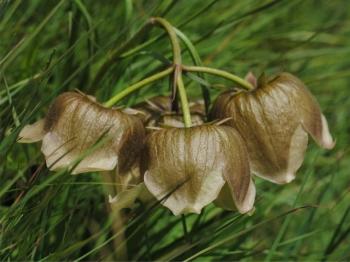
Figure 1. Pachycarpus campanulatus var. campanulatus showing the inflorescence with pendent flowers.
Description
Description
A slender, geophytic herb, up to 750 mm high. The root is tuberous. The stem is simple and harshly hairy. Leaves are simple, narrow and hairy with the blade 76–152 × 3–10 mm. The margins are rolled in below and have prominent veins below. The petiole is very short, less than 6 mm long.
The inflorescence is large, up to 114 mm long, solitary, hanging or nodding with 3–5 flowers per umbel. The calyx is acute, broad and lance-shaped, up to 10–19 × 4–6 mm. The corolla is globose, with a diameter of 24–50 mm, pale green, dull cream-green, becoming brown with age and coarsely pubescent. The pedicels that attach the inflorescence to the stem are subscabrous (rough) to pubescent, up to 19–38 mm long. The peduncles that attach the flowers to the pedicel are 19–32 mm long.

Figure 2. Pachycarpus campanulatus var. campanulatus showing the corona lobes stretching from the centre to the rim of the corolla. (Photo: Adam Shuttleworth)
The corona lobes (7–16 mm long), are linear to lanceolate, spreading and reaching the rim of the corolla; the keels are paired and obliquely deltoid.
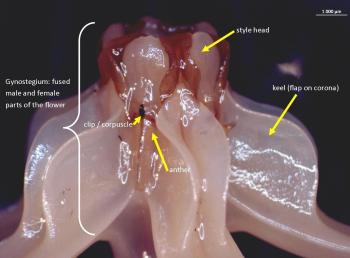
Figure 3. Central gynostegial column which consists of the fused anthers, style and stigma and keels of the corona.
The pollinia are narrowly pear-shaped. The bracts are broad, linear to linear-lanceolate, 12–16 × ± 2 mm. The fruits are fleshy and seeds are bifacial, with one side slightly concave. The anther appendages are 3–4 mm long. The style apex is crater-like. This species flowers in summer, from November to February.

Figure 4. The pollination unit consisting of a clip that attaches to the pollinator and the pollen gathered in 2 sacs (pollinia).
Conservation Status
Status
According to Red List of South African plants, ishongwe is listed as Least Concern (LC). Despite the wide distribution of this species in the wild, plants are relatively rare and with low numbers within a population. Except for Pachycarpus campanulatus var. sutherlandii, the other closely related species to P. campanulatus var. campanulatus, species in the section Trichocodon and are all of conservation importance: P. linearis [Data Deficient]; P. rostratus [Critically Rare, possibly Extinct] and P. suaveolens [Vulnerable].
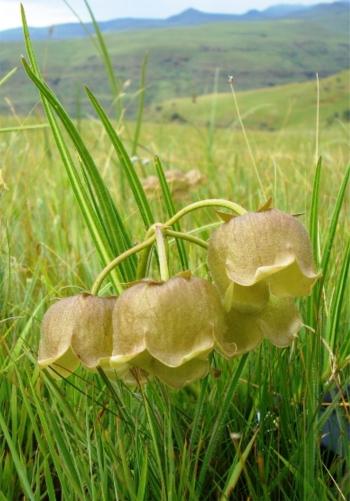
Figure 5. Typical habitat of Pachycarpus campanulatus, where it grows in open grassland. (Photo: Judd Kirkel)
Distribution and habitat
Distribution description
Pachycarpus is an African native genus. There are ± 30 species, 27 of which are found widespread in grasslands of southern Africa. Trosklokkies are normally found in rocky grassland, at altitudes of 1371–1834 m above sea level. According to BODATSA (Botanical Database of southern Africa) records, the species is widely distributed mostly in the Provinces of KwaZulu-Natal (especially south of Tugela River) and the Eastern Cape, South Africa. This species is also found scattered in Limpopo, Mpumalanga, Gauteng and Free State Provinces.
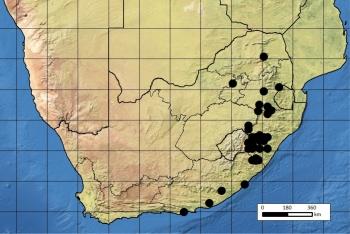
Figure 6. Known distribution map of Pachycarpus campanulatus var. campanulatus based on records in the holdings of the 3 SANBI herbaria (NBG, NH & PRE).
Derivation of name and historical aspects
History
The name Pachycarpus is derived from the Greek words pachys, meaning ‘thick’ and karpos, meaning ‘fruit’, referring to the rather leathery large fruits that are characteristic for the genus. The specific epithet refers to the bell-shaped flowers.
Pachycarpus schinzianus and P. natalensis are 2 other species from the genus that have been covered in this series. The latter, however, belongs to the section Pachycarpus, whereas P. campanulatus belongs to the section Trichocodon (Smith 1988).
The typical P. campanulatus is easily distinguished from the variety sutherlandii by the former having a few large flowers, compared to the latter having more medium-sized flowers. The corona of P. campanulatus subsp. campanulatus reaches the rim of the corolla, while that of var. sutherlandii only extends halfway from the centre of the flower, to the corolla rim.
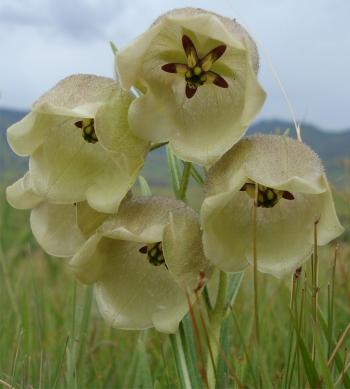
Figure 7. The closely related Pachycarpus campanulatus var. sutherlandii. Note the corona lobe not reaching the rim of the corolla (flower-cup). (Photo: Judd Kirkel)
Other closely related species include, Pachycarpus suaveolens and P. gerrardii.
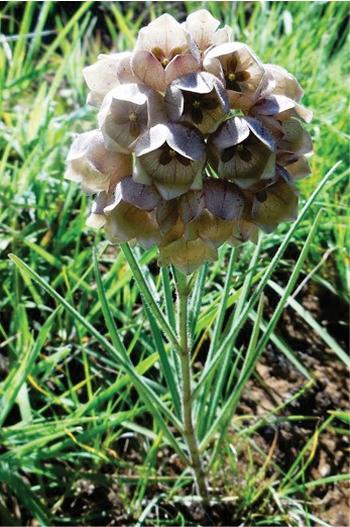
Figure 8. The closely related Pachycarpus gerrardii with an inflorescence consisting of numerous flowers. (Photo: Clinton Carbutt)
Ecology
Ecology
Spider-hunter wasps (Hemipepsis capensis) are the main pollinators of the fairy bell Pachycarpus. Hemipepsis hilaris and Halictidae species (bee family) have rarely been observed visiting the flowers of P. campanulatus. Since the flowers of this species are hanging, the wasps normally land on the outside of the corolla and crawl inside the large flowers. The wasps then hang from the centre column in order to get the nectar and in this process, the pollinaria are attached to the claws of the pollinators.
Uses
Use
During droughts and famine, the roots of the toad plant are eaten by the Zulu tribe of South Africa to alleviate hunger and thus, it is considered ‘famine food’. It is not usually consumed otherwise. Most members of Pachycarpus have medicinal value. A cup of powdered roots are boiled and drunk 3 times a day for the treatment of diarrhoea, dysentery, stomach cramps, oedema, indigestion, dysmenorrhoea, colic and afterbirth cramps. Powdered roots are snuffed for headaches and applied topically to sores, wounds and abscesses for the treatment of these.
Growing Pachycarpus campanulatus
Grow
As far as could be established, this plant is not known to be cultivated, nor available from nurseries. It would probably be a challenge to the avid plant enthusiast or collector not only to find seed, but try and grow this amazing plant.
References
- Brown, N.E. 1907. Asclepiadeae. In Flora capensis 1909, Volume 4; Section 1; Part 4; pages 736.
- Fabian, A. & Germishuizen, G. 1982. Transvaal wild flowers. Macmillan, Johannesburg.
- Leistner, O.A. (ed.). 2000. Seed plants of southern Africa: families and genera. Strelitzia 10. National Botanical Institute, Pretoria.
- Nicholas, A. 1999. A taxonomic reassessment of the subtribe Asclepiadinae (Asclepiadaceae) in southern Africa. Ph.D. thesis, University of Durban Westville, Durban.
- Pooley, E. 2003. Mountain flowers, a field guide to the flora of the Drakensberg and Lesotho. Natal Flora Publications Trust, Durban.
- Pooley, E. 2005. A field guide to wild flowers KwaZulu-Natal and the eastern regions. The Flora Publications Trust, Durban.
- Foden, W. & Potter, L. 2005. Pachycarpus campanulatus (Harv.) N.E.Br. var. campanulatus. National Assessment: Red List of South African Plants version 2017.1. Accessed on 2018/07/09
- Shuttleworth, A. & Johnson, S.D. 2009. New records of insect pollinators for South African asclepiads (Apocynaceae: Asclepiadoideae). South African Journal of Botany 75: 689–69.
- Smith, D.M.N. 1988. A revision of the genus Pachycarpus in southern Africa. South African Journal of Botany 54: 399–439.
- Van Wyk, B.-E., Van Oudtshoorn, B. & Gericke, N. 2009. Medicinal plants of South Africa, edn 2. Briza Publications, Pretoria.
Credits
M. Nkwanyana and S.P. Bester
National Herbarium, Pretoria
August 2018
Plant Attributes:
Plant Type: Bulb, Perennial
SA Distribution: Eastern Cape, Free State, KwaZulu-Natal, Limpopo, Mpumalanga
Soil type: Loam
Flowering season: Early Summer, Late Summer
PH:
Flower colour: Green, Cream
Aspect: Full Sun
Gardening skill: Challenging
Special Features:
Horticultural zones








Rate this article
Article well written and informative
Rate this plant
Is this an interesting plant?
Login to add your Comment
Back to topNot registered yet? Click here to register.